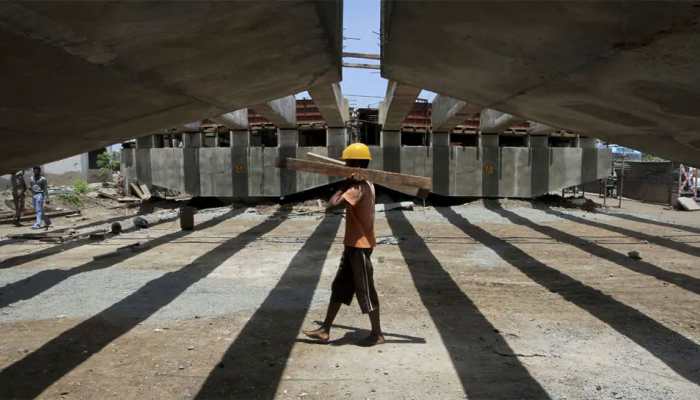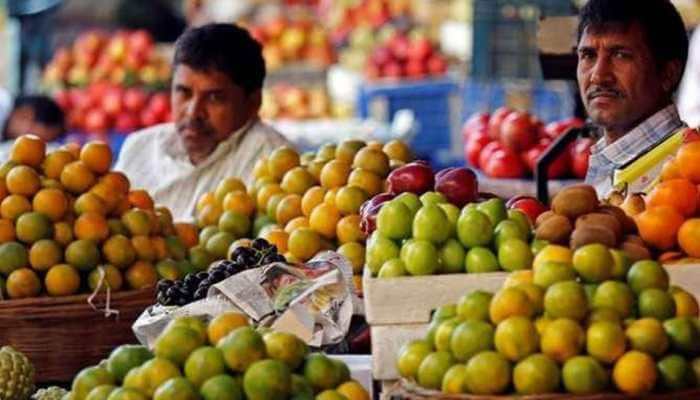Inflation News
India's Year-on-year inflation rate based on All India Consumer Price Index (CPI) for the month of July dropped to 1.55. There is decline of 55 basis points in headline inflation of July, 2025 in comparison to June, 2025, the lowest year-on-year inflation rate after June 2017, government data showed on Tuesday.
The Wholesale Price Index (WPI) is estimated to have fallen to -0.45 per cent year-on-year in July, down from -0.13 per cent in June. This is the lowest level since August 2023, signalling a continued deflationary trend in wholesale prices.
The decline in the cost of a non-vegetarian thali was driven by lower vegetable prices and an estimated 12 per cent on-year drop in broiler prices, which make up about 50 per cent of its cost, the report said.
GDP growth accelerated to 7.4 per cent on-year in the fourth quarter of last fiscal from 6.4 per cent in the previous quarter. Overall, GDP grew 6.5 per cent last fiscal (FY25).
In its latest research report, Morgan Stanley said consumer price index (CPI) inflation has been consistently falling below 4 per cent since February this year. For the first half of calendar year 2025 (H1 CY25), inflation averaged just 3.2 per cent, compared to 5 per cent during the same period previous year.
The Finance Ministry figures show that the average inflation under Prime Minister Narendra Modi’s tenure stands at 5.1 per cent, compared to 8.1 per cent in the UPA regime.
WPI-based inflation has been steadily easing since March and hit a 14-month low of 0.39 per cent in May.
A steady rise in consumption is crucial for a strong rebound in private sector investment. “We expect private consumption growth of 6.2 per cent in FY26 compared to an average of 6.7 per cent in the last three years. In the long run, it will be critical to monitor factors impacting household income to ensure healthy growth in private consumption,” said a report by CareEdge Ratings.
Inflation can kill your savings here are few ways to beat sticky inflation and grow your money.
FY25 concluded on a strong note for India's granaries, with robust cereal production ensuring ample stock levels. This abundance is expected to help contain cereal inflation in the near term.
India's annual rate of inflation based on the Wholesale Price Index (WPI) eased further to a 14-month low of 0.39 per cent in May from 0.85 per cent in April and 2.05 per cent in March.
The combination of robust global demand and rising backlogs prompted manufacturers to increase hiring.
The annual rate of inflation based on the WPI eased further to a 14-month low of 0.39 per cent in May this year from 0.85 per cent in April and 2.05 per cent in March, according to the Ministry of Commerce and Industry data.
The RBI also announced a 100 basis point cut in the Cash Reserve Ratio (CRR), from 4 per cent to 3 per cent, to be implemented in four tranches of 25 bps each.
Foreign institutional investors (FIIs) remained net sellers last week, offloading shares worth Rs 1,246 crore.
One of the major contributors to the decline in inflation was a further easing in food prices. Food inflation came down to 0.99 per cent in May from 1.78 per cent in April.
The RBI now expects inflation to remain below or near target throughout the year, with CPI projections set at 2.9 per cent for Q1, 3.4 per cent for Q2, 3.9 per cent for Q3, and 4.4 per cent for Q4.
Food Inflation declined to 0.99 per cent during May, which is the lowest since October 2021. This is the seventh month in a row that food inflation has registered a decline as the agricultural output has been on the rise.
Let’s analyse why your money is depriciating, what it means for your savings, and what you can do about it—using Srivastava’s insights, but in simple, everyday language.
The uncertainties regarding rabi crops have abated considerably and the second advance estimates point to a record wheat production and higher production of key pulses over that last year.
Loading...



)
)
)
)
)
)
)
)
)
)
)
)
)
)
)
)
)
)
)
)
)
)
)
)
)
)
)
)
)
)
